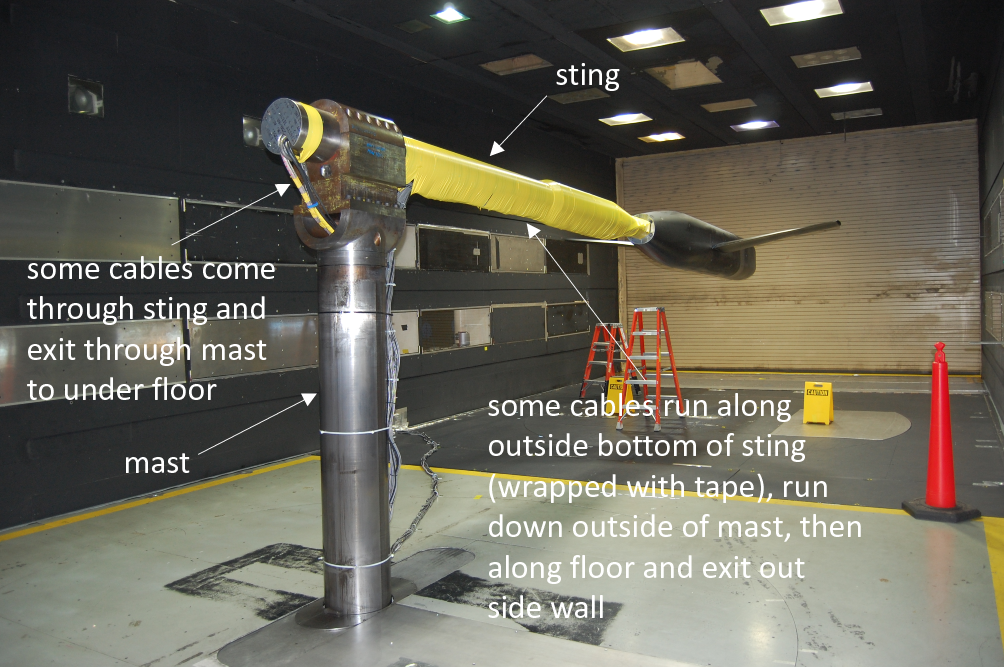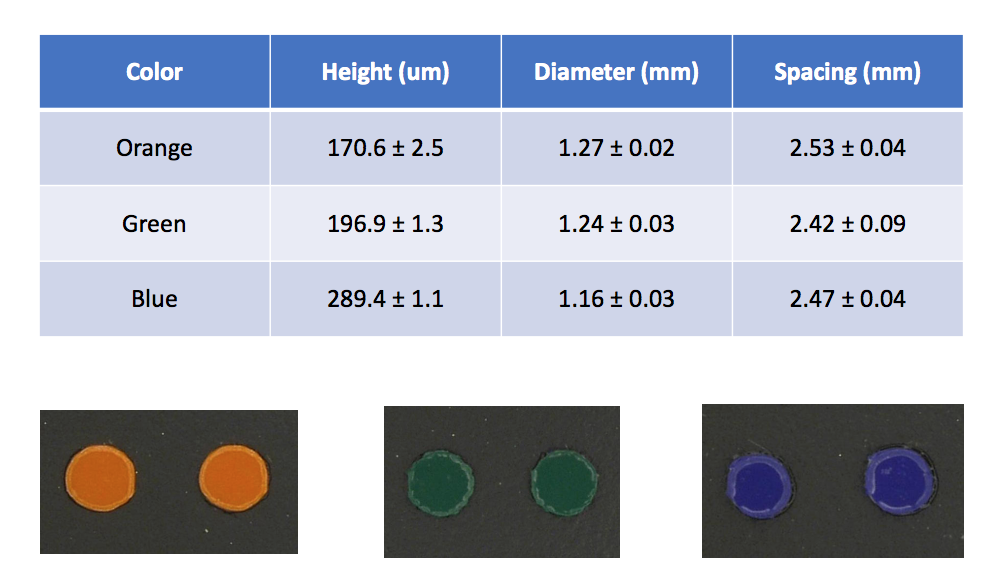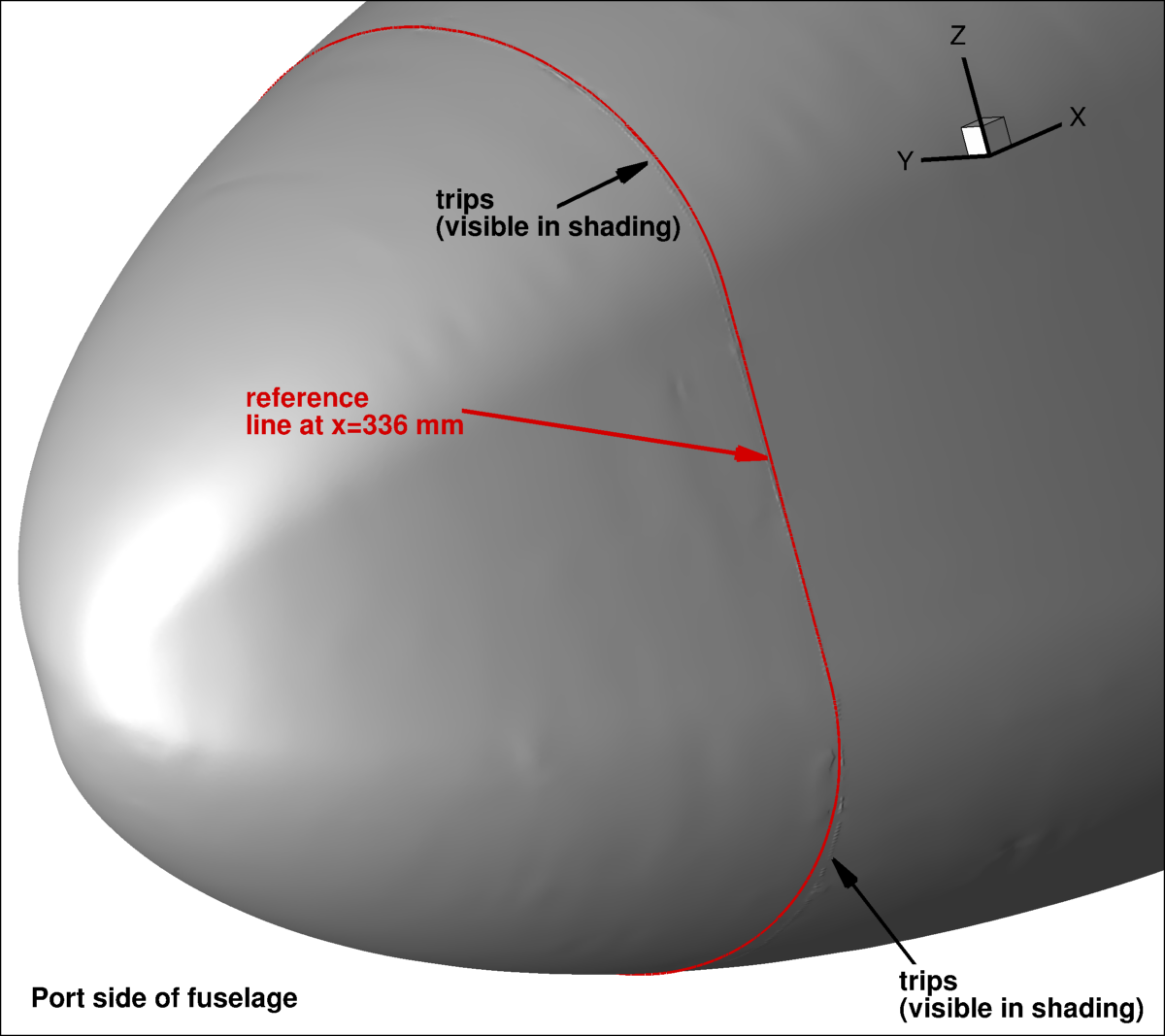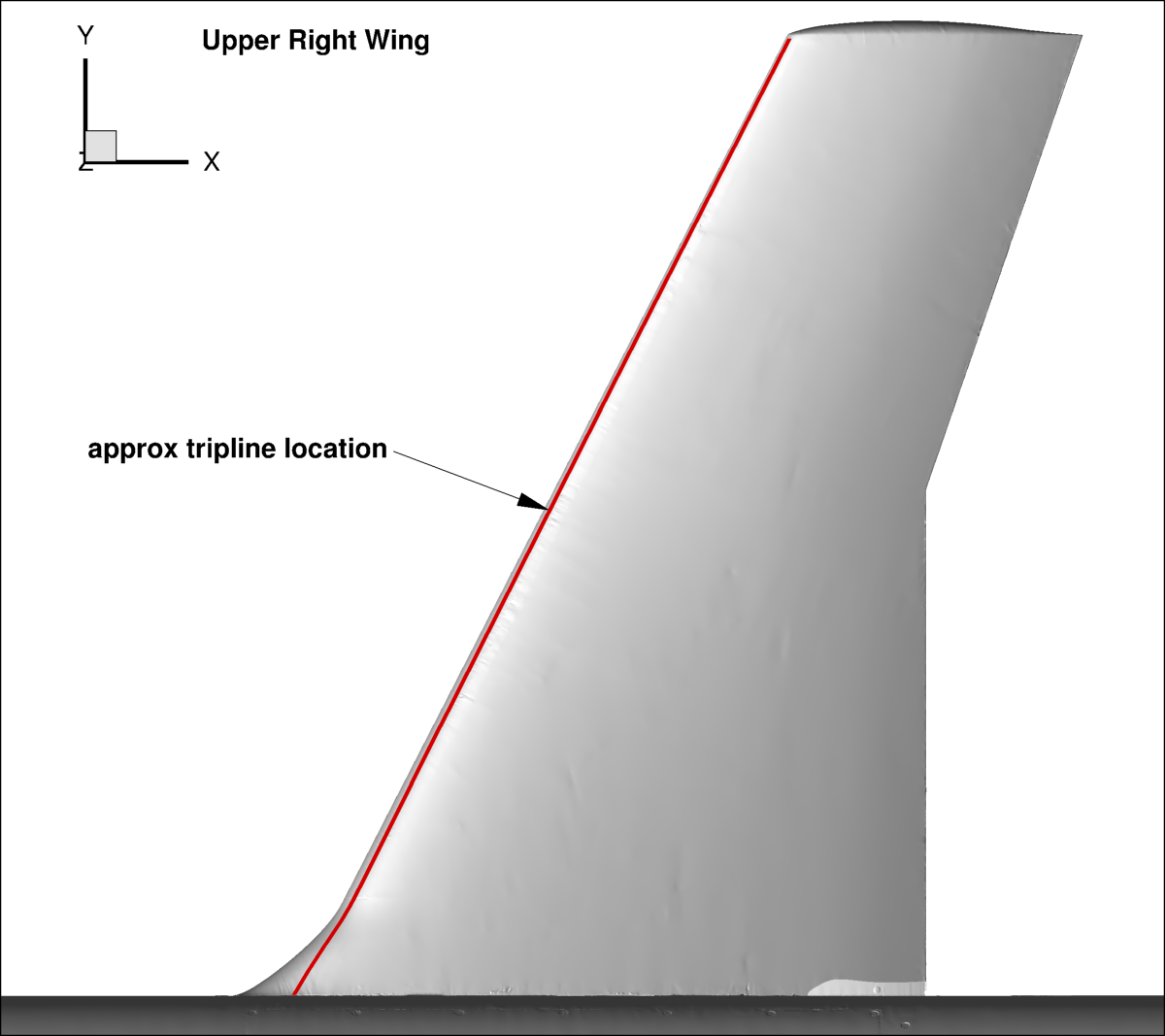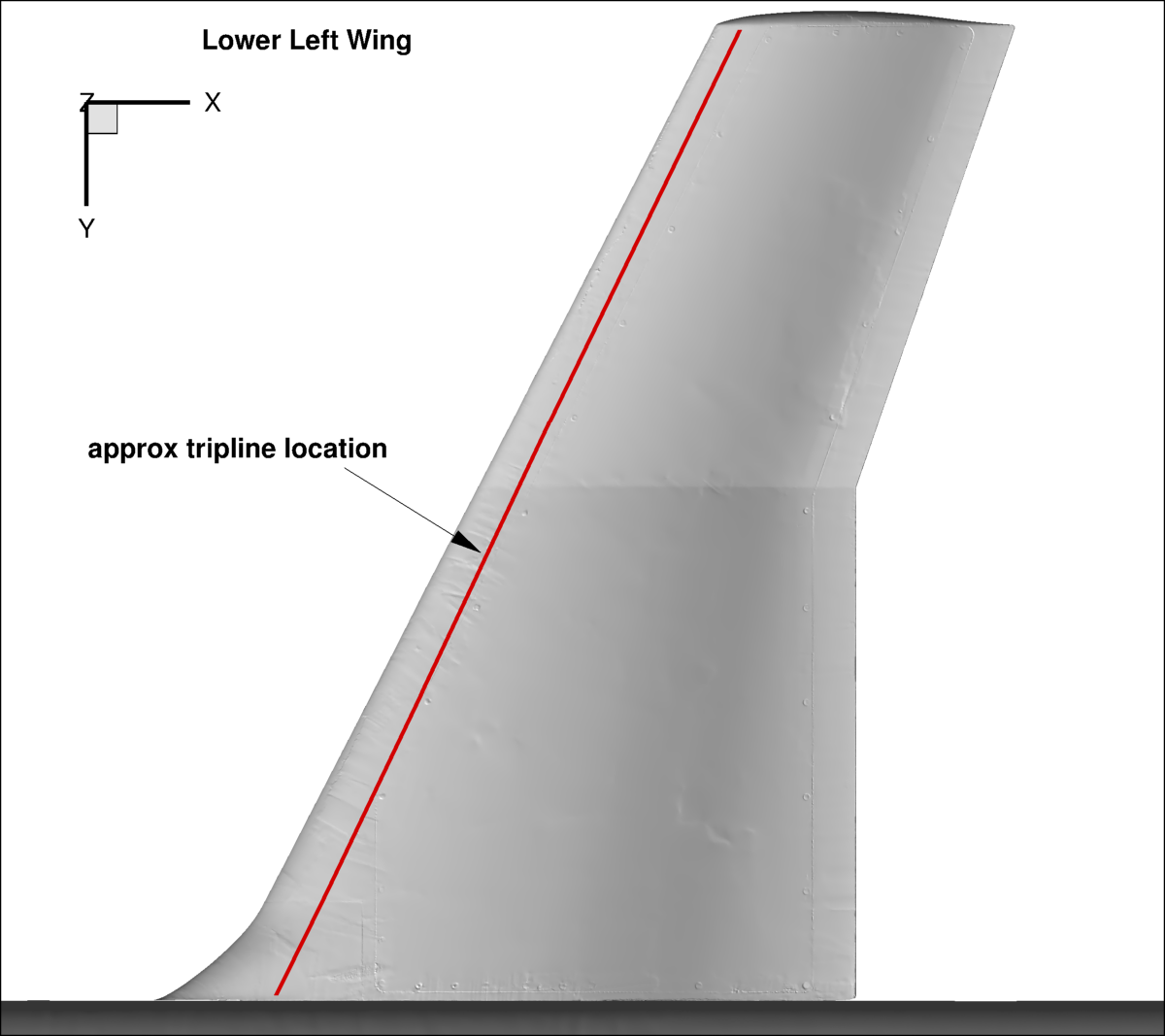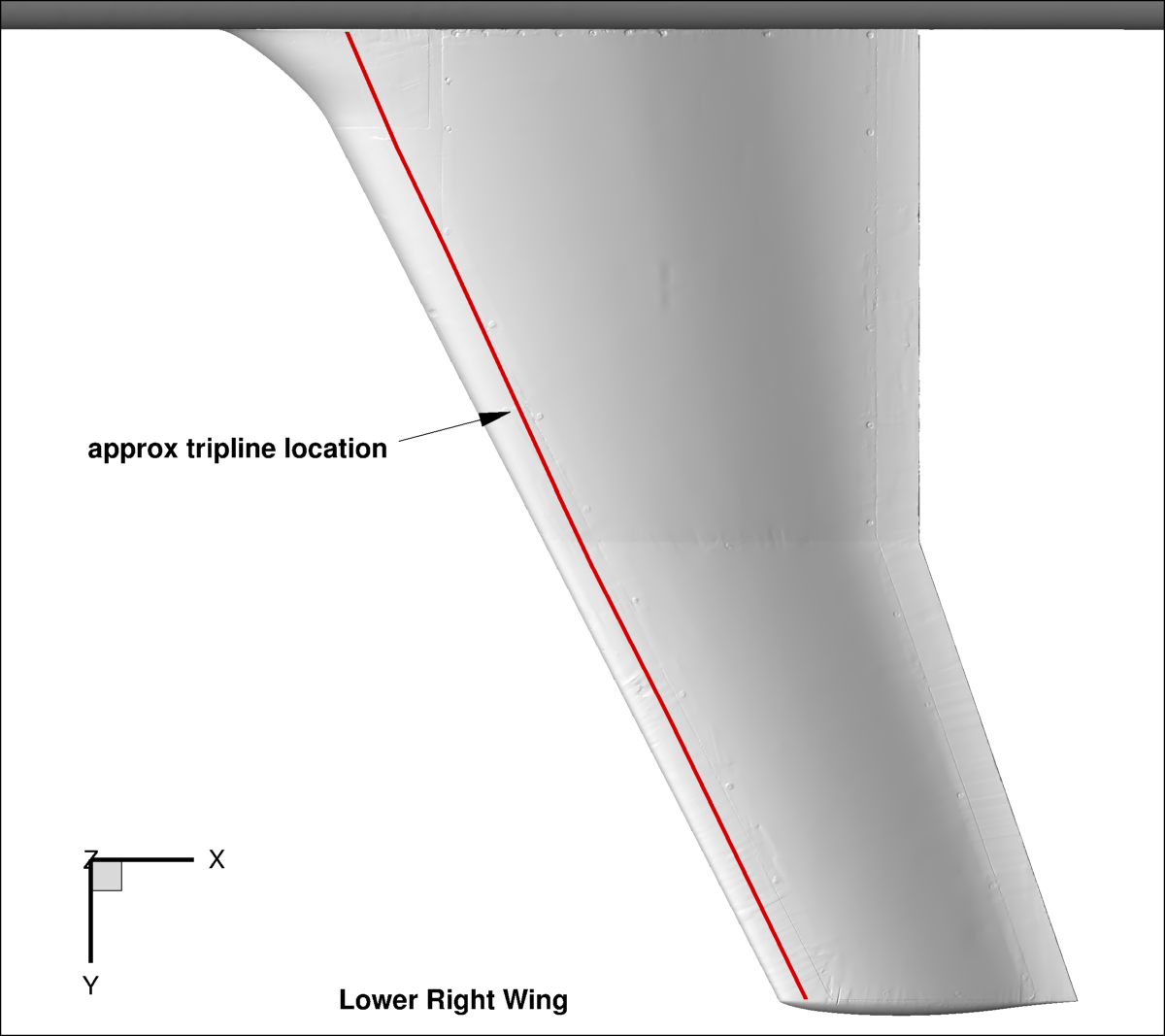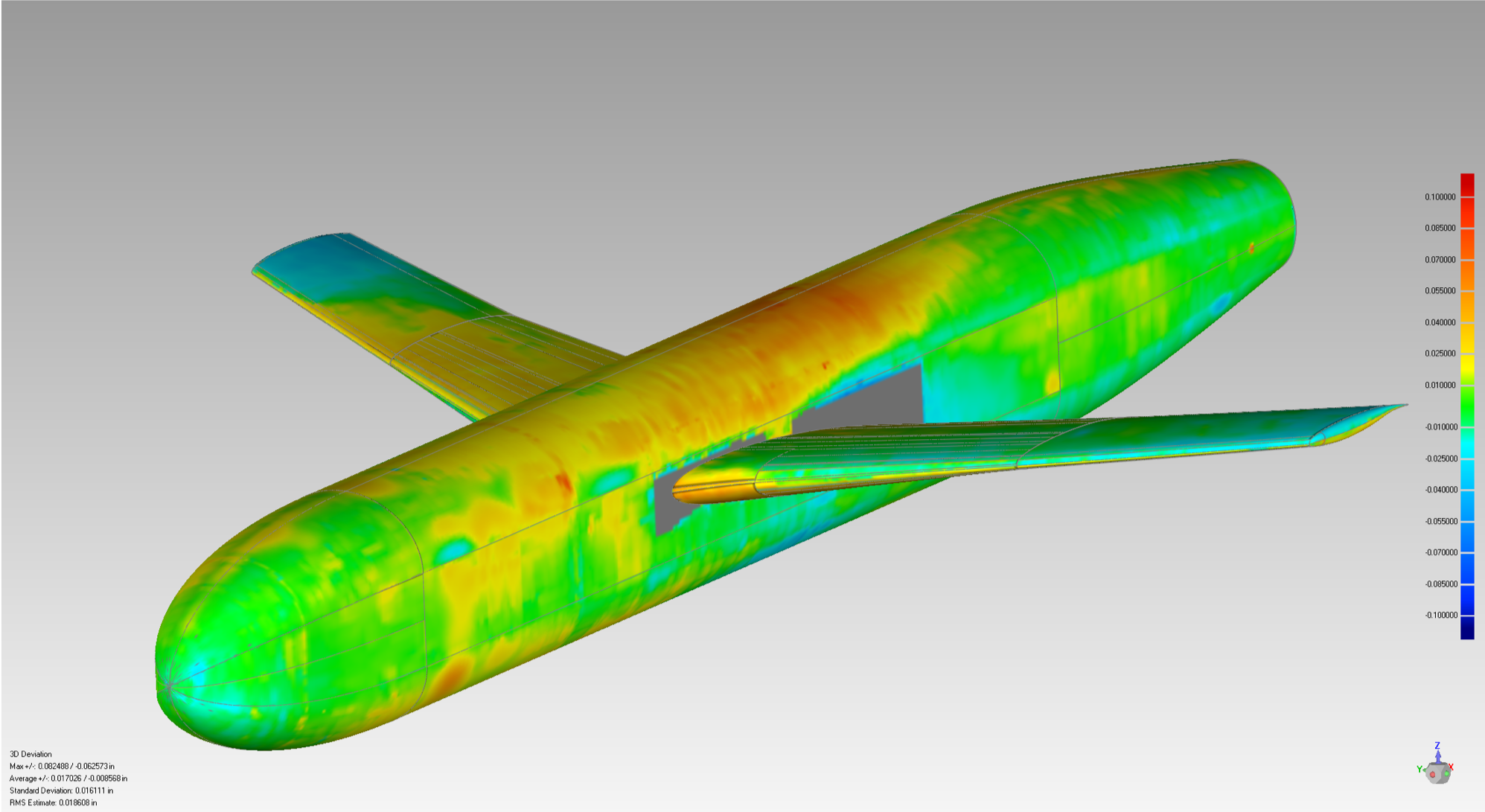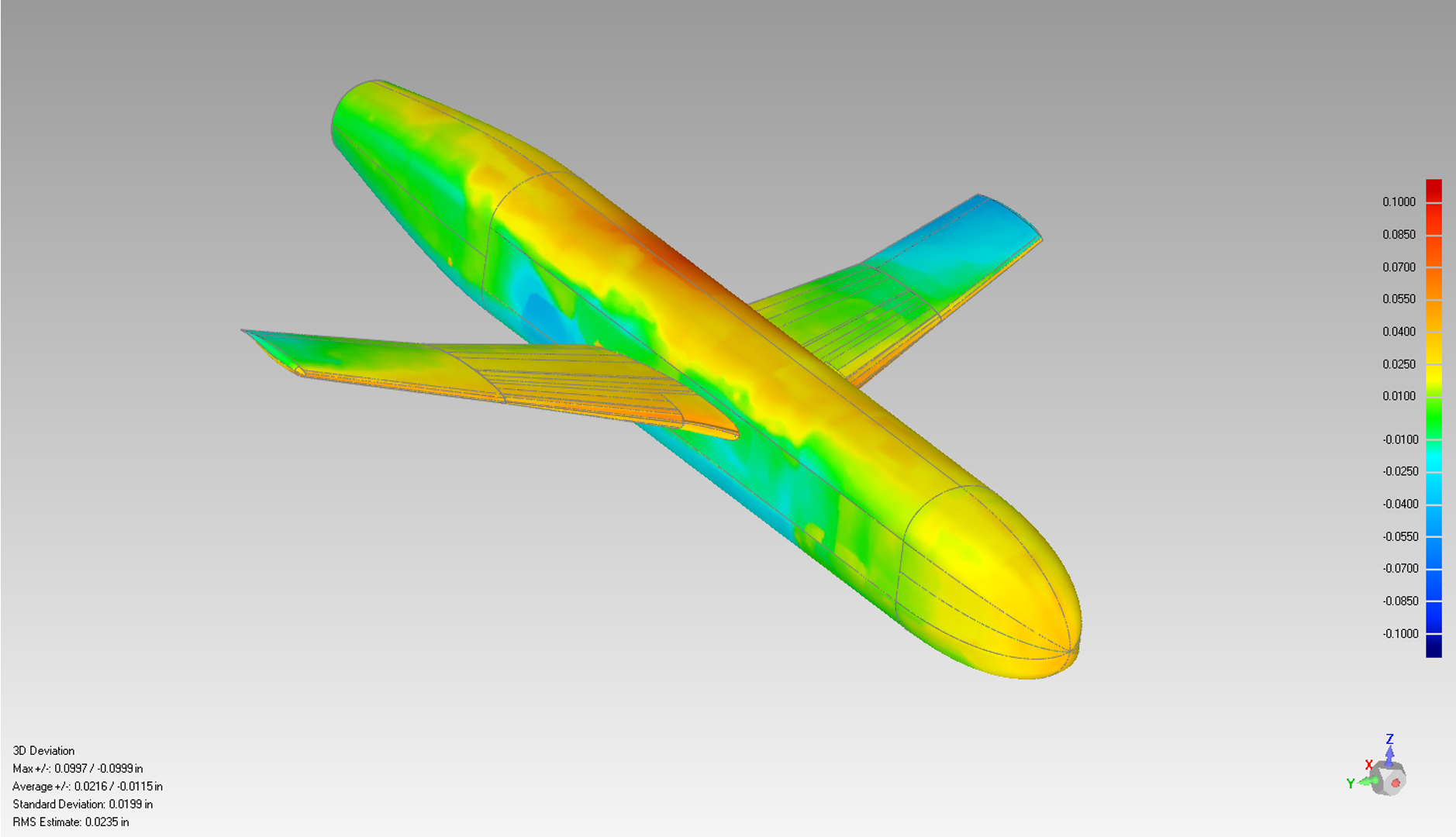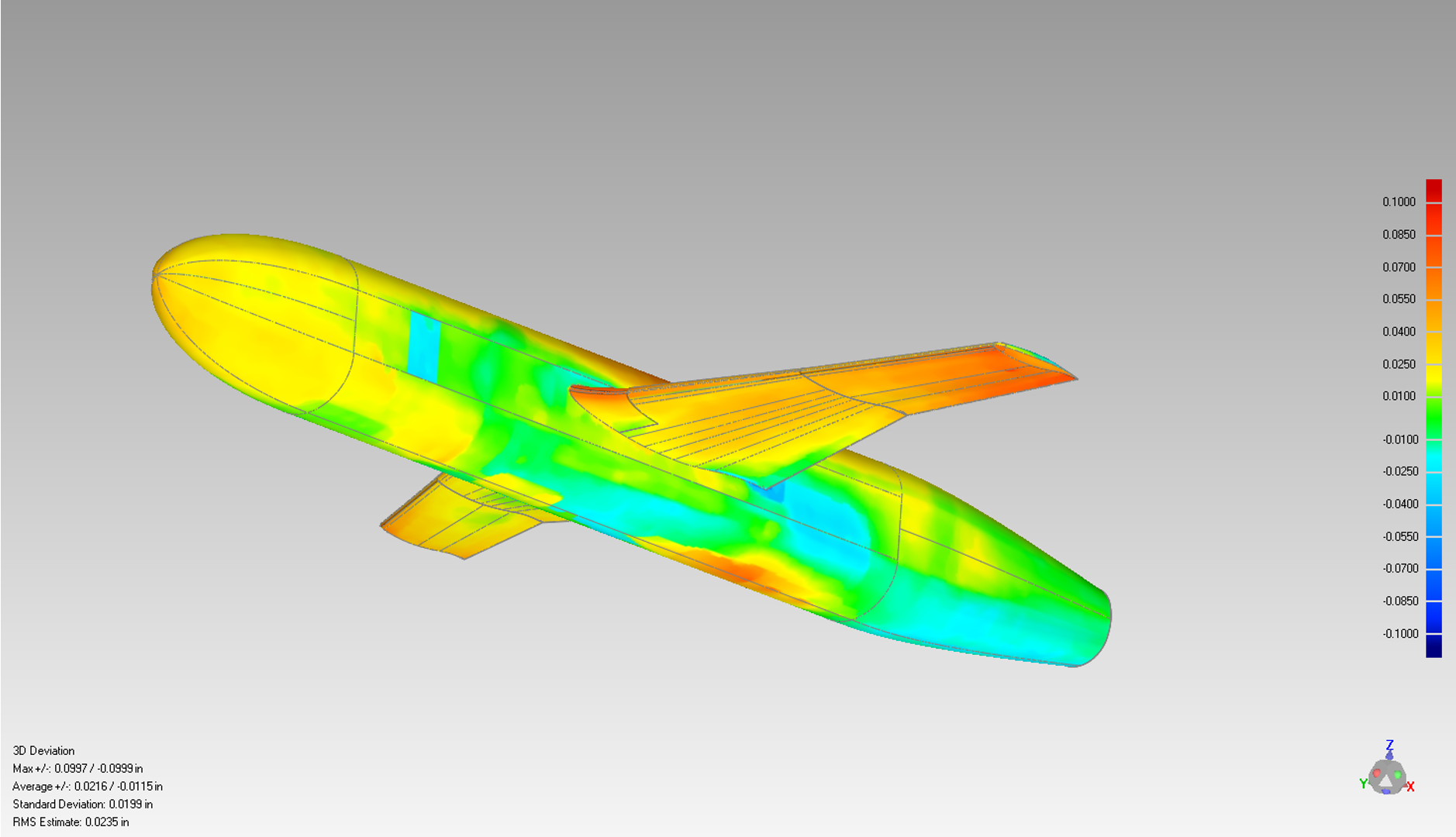
 |
Langley Research Center
Turbulence Modeling Resource
|
Exp: NASA Juncture Flow (JF) - Turbulent F6-Based Geometry
Return to: Exp: NASA Juncture Flow - Intro Page for Turbulent F6-Based Wing
Return to: Exp: NASA Juncture Flow - Intro Page
Return to: Data from Experiments - Intro Page
Return to: Turbulence Modeling Resource Home Page
CAD FILES FOR THE F6-BASED CONFIGURATIONS (WITH AND WITHOUT HORN)
- As-designed F6-based wing and body with horn/leading edge extension (Tests 640 and 653):
- Parasolid format (gzipped) (units of meters)
- STEP format (gzipped) (units of mm)
- IGES format (gzipped) (units of mm)
- Cleaned-up version of the CAD (STEP format, gzipped) (units of mm)
<- new as of 02/16/2022
- This STEP file removes the fractured faces, edges, and strips present in the official CAD above,
while maintaining very small deviation (less than about 0.085 mm) from the original geometry.
If you use this file, be aware of the slight differences from the official original.
- In_tunnel_v2.tar.gz (gzipped tar file, 39.2 MB, revised 8/31/2020)
- Contains 14x22 tunnel
definition, as-designed F6-based wing and body with horn/leading edge extension placed
with respect to the tunnel at 5 different angles of incidence (-2.5. 5.0, and 7.5 deg model upright, and
-5.0 and 2.5 deg model inverted), and approximated mast/sting definitions).
- The V2 revision includes new CAD positioning for AoA=7.5 deg, which was examined extensively in Test 653.
The other CAD data in the directory remains unchanged.
- Some important information needed for running Juncture Flow CFD in the tunnel is provided on the
JF Turbulent F6-Based Boundary Conditions page.
- As-designed F6-based wing and body without horn/leading edge extension (Test 638):
- Note that the STEP and IGES files above were updated on 10/15/2021.
For an unknown reason, somewhat larger-than-expected trimming gaps appeared when NX originally exported these files.
The "improved" files above, created directly from the master Parasolid data by Mark Gammon of
ITI-Global, have smaller trimming gaps. If desired, the old files with larger trimming
gaps can still be found here:
jfm_dlr_f6_wHorn_harrison_fuselage-2017_02_06_fullspan_mm.stp.gz,
jfm_dlr_f6_wHorn_harrison_fuselage-2017_02_06_fullspan_mm.igs.gz,
jfm_dlr_f6_harrison_fuselage_2017_02_06_fullspan_mm.stp.gz,
jfm_dlr_f6_harrison_fuselage_2017_02_06_fullspan_mm.igs.gz.
Notes:
- Three CAD formats are provided: The Parasolid (x_t) files are the "native" files, with default units of meters. The
STEP (stp) and IGES (igs) file versions are given in mm. Because the experimental data are provided in mm, for direct
comparisons it is recommended that units of mm be used when building CFD grids.
- The experimental data has the fuselage nose at (0,0,0), x axis along the body axis, z up, and y out
the starboard side. Also, all LDV data profiles (as well as all surface pressure taps) are aligned with this
body axis system. When extracting velocities, Reynolds stresses, etc. from CFD, this is the coordinate system
that you need to use when comparing with the experimental data. The "as-designed F6-based wing and body"
CAD definitions are already in this coordinate system, but the "in tunnel" CAD is not (the "in tunnel" x=0 is
positioned at the start of the test section and x runs horizontally with respect to the tunnel).
Therefore, when running a
CFD simulation in the tunnel, it may be useful to shift and rotate the coordinate system to match the above. In
this way, extraction of the data will be easier, and the velocities and Reynolds stresses will already be in
the correct coordinate system.
- Sting and mast models are included in "In_tunnel_v2.tar.gz", but these are only crude approximations.
Their positioning relative to the tunnel
was based on GIS laser scans. Also, there were cables that ran along
the bottom of the sting and then down the outside of the mast and along the tunnel floor. The entire sting was wrapped with
tape to secure the cables in place. The shape due to cables/tape is not included in the approximated models.
See photos immediately below for typical cabling setup (which was not always the same - the cables occasionally had to be
repositioned - throughout the test).
- Distance from the model nose to the centerline of the mast (measured along a line passing through the center of the model
and sting) is 9229.912 mm.
- None of the files provided above account for any aeroelastic deflection.
- The CAD of the wind tunnel high-speed leg was created from a laser scan, but was simplified (many recesses etc were faired
over or ignored). This simplified as-built model was also used/evaluated in AIAA Paper 2015-2022.
The wind tunnel CAD is positioned with x=0 at the start of the test section, and y=z=0 is along the "centerline" (z=up).
- The wind tunnel's outer wall (sometimes referred to as the "north wall") is located to the left when facing forward (pilot's view);
the inner wall ("south wall") is located to the right.
- The wind tunnel has a 127 mm wide flow-straightening honeycomb centered near x = -20.117 m, followed by 4 screens
near x = -19.291, -19.063, -18.885, and -18.707 m. For this and other 14x22
wind tunnel details, see
NASA TP 3008, September 1990 and
NASA TM 85662, December 1983.
(Note the latter paper title refers to the 14x22 tunnel in metric units: 4- by 7-Meter. However, nowadays
the tunnel is typically referred to by its name referenced in feet.)
- In the wind tunnel, the approximate locations of the probes used to determine running conditions are:
- Total Pressure: (x,y,z) = (-18.105, -7.010, -4.084) m (1.646 m away from the north wall)
- Static Pressure: (x,y,z) = (-3.658, -3.048, 0) m (355.60 mm away from the north wall)
- Stagnation Temperature: (x,y,z) = (-0.140, -3.234, -0.269) m (82.55 mm away from the north wall)
- Dewpoint sensor orifice: (x,y,z) = (-0.140, -3.317, -0.187) m (on the north wall)
- The F6-based wing is based on the original DLR-F6 wing shape, but it has been truncated to have a shorter span.
The fuselage used in the Juncture Flow experiment is unique.
- At the wing-root juncture near the wing trailing edge where separation occurs, the fuselage body is at y=-236.098 mm and the
wing trailing edge is at x=2961.929 mm.
- The approximate rotations/translations (in order) to get the model (with nose at (0,0,0), x axis along the body axis, z up, and y out
the starboard side) into position in the wind tunnel (all units in mm) are:
- Incidence angle = 5 deg:
- X-rotation = 0.02622944 deg
- Z-rotation = -0.021198898 deg
- Y-rotation = 5.00004783 deg
- X-translation = 2873.098936
- Y-translation = -6.155033
- Z-translation = 217.321846
- Incidence angle = -2.5 deg:
- X-rotation = 0.02323800 deg
- Z-rotation = -0.02444117 deg
- Y-rotation = -2.49995206 deg
- X-translation = 2908.038625
- Y-translation = -6.031538
- Z-translation = -107.753423
- Incidence angle = 7.5 deg (from Test 653):
- X-rotation = 0.0 deg
- Z-rotation = -0.020035 deg
- Y-rotation = 7.50 deg
- X-translation = 2814.29889840845
- Y-translation = -5.64586024643
- Z-translation = 333.05294534274
- Data were not taken to determine angle of attack corrections (accounting for influence of the tunnel walls).
Therefore, in free-air CFD runs to date, the nominal incidence angles of 7.5, 5, and -2.5 degrees were used for freestream angle of attack
(see AIAA-2019-0079, AIAA-2019-0080, and AIAA-2020-1304). This is obviously not strictly correct, but arguably the effect on many
quantities of interest (QoI) is relatively minor (see AIAA-2019-0080 and AIAA-2020-1304).
- In the experiment, forces and moments were not measured.
- During the tunnel runs, the goal was to try to keep a reference point on the model (2.448 m behind the model nose tip and on the fuselage
centerline) located approximately 5.4 m from the test section entrance and at the center of the test section (2.2098 m above
the floor).
Laser scans of the model were taken at angles of -2.5, 5, and 7.5 deg, providing information used to make CAD
representations of the actual model positions, provided in the file In_tunnel_v2.tar.gz (given above).
However, the laser scans were performed wind off, so the test article position in the CAD files had to be adjusted slightly
to achieve the wind-on angle of incidence. This was done by keeping the mast location as measured, and adjusting the test article and
sting positions. The real sting had some bending (wind on), but in the CAD the sting is represented as straight.
Note that at the lowest pitch angles of -10 deg and -7.5 deg, the desired height could not be achieved due to geometrical constraints on the
sting/mast. Reference point height was reduced to 1.7907 m and 2.0574 m above the floor, respectively, for those two angles.
- The average roughness and the rms roughness for the painted model surface was 2.70 +- 0.94 μm and 3.33 +- 1.12 μm,
respectively.
DISCUSSION OF MODEL TRIPS
The boundary layers on the JF
model were tripped using trip dots (their effectiveness was verified by infrared thermography).
Three types of trip dots were used: orange trip dots were used on the upper wing surfaces, green trip dots were used on
the lower wing surfaces, and blue trip dots were used on the fuselage.
The characteristics of each of these trip dots are provided in the following figure:
Trip dots were placed by hand around the nose of the fuselage. Nominally, the goal was to place
them on the side of the fuselage a specific distance from the nose (running along the surface), then to maintain
this x-location all the way around. From the laser scan, the actual x-location varied in the
range 333 < x < 351 mm, approximately as follows:
- On the flat port side: x=333 mm top, increasing to x=336 mm bottom
- On the flat starboard side: x=338 mm top, increasing to x=340 mm bottom
- On the top: x=333 mm left, increasing to x=338 mm right
- On the bottom: x=336 mm left, increasing to x=351 mm near bottom, then decreasing to x=340 mm right
The following figure is from an STL file created from the scanned points of the F6-based wing and
body with horn/leading edge extension (note that the STL file
introduces additional wiggles and non-smoothness that is not present in the real geometry). This scan
result can be used to visualize and verify the trip dot placement.
On the wing, trip dots were placed by creating 5 forms that fit around the leading edge at stations along the span,
and marking out roughly 1.6% local chord for the upper surface and 10% local chord for the lower surface.
Between these locations and over the horn, the trip dots were applied by hand in roughly straight lines.
Although the laser scan shows some variations (particularly on the right wing lower surface), these trip locations can
very crudely be approximated by the following lines projected onto the wing surface (in mm):
- Lower surface left wing: x = (4144-y)/2.082
- Lower surface right wing: x = (4144+y)/2.082
- Upper surface left wing: x = (3775-y)/1.975 (outboard of y=-362)
- Upper surface left wing: x = (2847-y)/1.532 (inboard of y=-362)
- Upper surface right wing: x = (3775+y)/1.975 (outboard of y=362)
- Upper surface right wing: x = (2847+y)/1.532 (inboard of y=362)
From the scan information, these equations appear to be accurate (in x) to about +-2 mm on the upper surfaces, to +-3 mm
on the lower left wing, and to +-10 mm on the lower right wing.
The following figures show the approximate wing tripline locations (recall that the STL
version of the scanned points introduces non-physical geometric behavior that appears as
surface wiggles and non-smoothness in these figures).
DISCUSSION OF MODEL DEFORMATION
There are always aeroelastic deflections in any
model. These are not accounted for in any of the files provided above, but these effects were measured
during Test 638 using photogrammetry. A brief discussion is provided here.
The model was supplied with an on-board measurement of incidence angle, so, regardless of the aeroelastic deflections of
the mast/sting, the model itself was positioned nominally at the specified incidence angle (e.g., 7.5 deg, 5 deg, or -2.5 deg)
relative to the oncoming flow.
(It should be noted that the actual ranges at these particular angles were 7.48 < incidence angle < 7.53 deg,
4.97 < incidence angle < 5.04 deg,
and -2.54 < incidence angle < -2.48 deg.)
To give a feel for the amount of aeroelastic deflection present in the mast/sting during wind-on operation, the on-board incidence angle
measurement typically changed from 5.0 deg (wind on) to 4.75 -> 4.78 deg (wind off) for the 5 deg case.
For the -2.5 deg case, the angle measurement typically changed from -2.5 deg (wind on) to -2.56 -> -2.58 deg (wind off).
From photogrammetry measurements on the wing (comparing tunnel off with tunnel on operation), the following was observed
for tunnel on:
- Incidence angle = -2.5 deg:
- Near wing tip close to trailing edge deflects up approx 0.24 mm
- Near wing tip close to leading edge deflects down approx 0.04 mm
- Approx twist down at tip = 0.040 deg
- Incidence angle = 5 deg:
- Near wing tip close to trailing edge deflects up approx 2.4 mm
- Near wing tip close to leading edge deflects up approx 1.8 mm
- Approx twist down at tip = 0.086 deg
- Incidence angle = 7.5 deg:
- Near wing tip close to trailing edge deflects up approx 3.0 mm
- Near wing tip close to leading edge deflects up approx 2.5 mm
- Approx twist down at tip = 0.075 deg
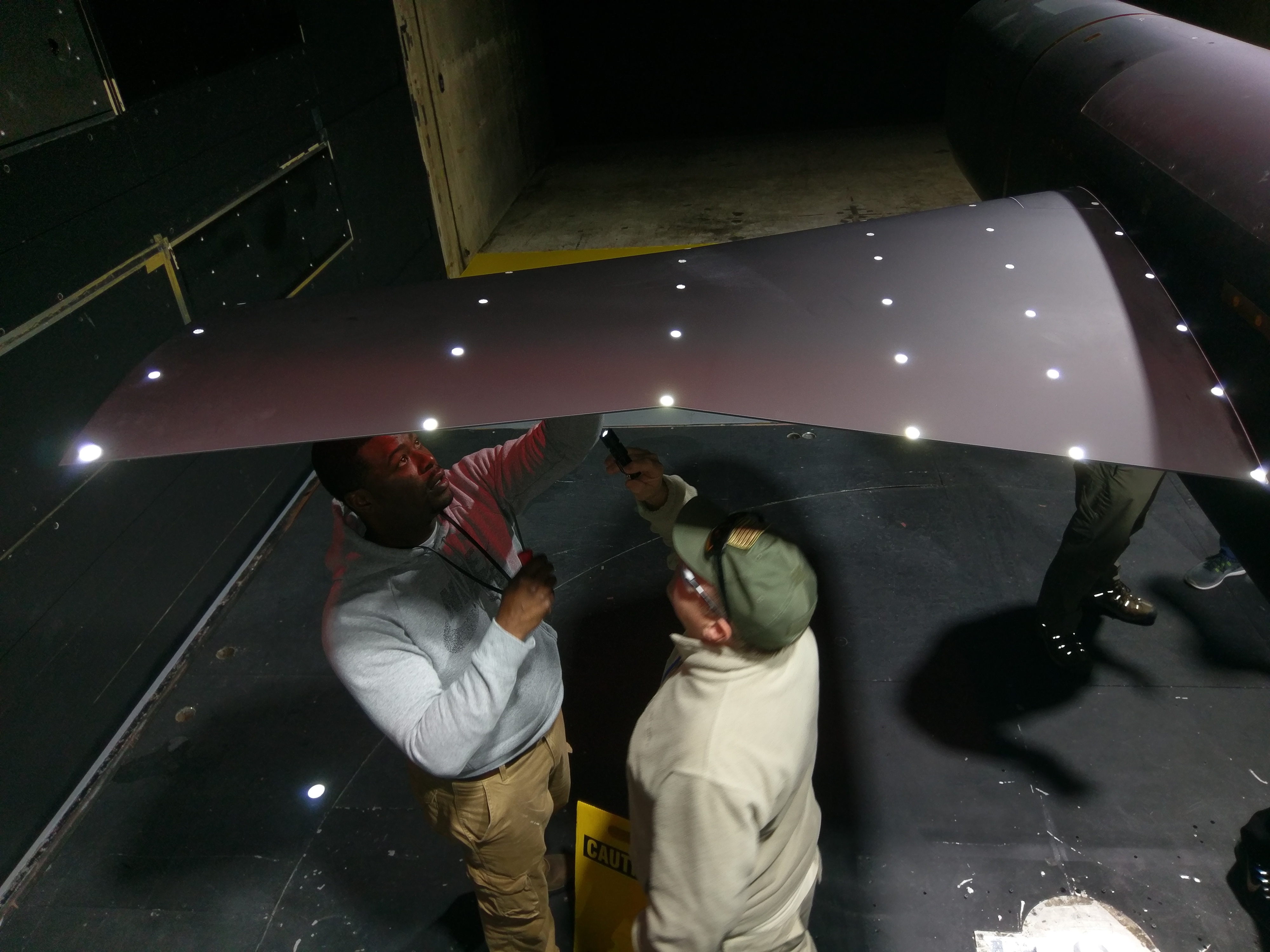
DISCUSSION OF AS-BUILT VS. AS-DESIGNED SHAPE OF THE MODEL
The as-designed model shape is provided above.
In addition to aeroelasticity influence, there is also the question of how close the as-built shape was to the as-designed.
The requested model manufacturing tolerance for most parts was 0.005 inches (0.127 mm), but the assembly of the model parts
no doubt adds uncertainty.
Another potential source of uncertainty is the fact that the original CAD was translated into inches
for the engineering drawings, from which the model was built.
A known difference is additional thickness due to paint (the model was painted to reduce flare during LDV data
acquisition). This paint thickness is estimated to be roughly 0.010 - 0.014 inches (0.254 - 0.356 mm).
Detailed laser scanning was done for the F6-based wing and body with horn/leading edge extension
in situ (in the tunnel with wind off) during both Test 640 and 653 (approximately 2 years apart).
Between the tests, the model was disassembled and stored. When reassembled, new seals were used between the
wings and fuselage to insure that no airflow passed through the junctions.
An API Arm Portable Coordinate Measuring Machine was used for the detailed scans.
To date, analysis of this data has proved to be difficult.
The measurement accuracy of the machine is reported to be
less than about 0.1 mm (about 0.004 inches). However, movement of the laser scan operator around the
model while holding the machine's arm (with the machine's tripod base standing on the wind tunnel floor
near the model) was seen to
yield instantaneous deviations of as much as 4 times this level (about 0.015 inches).
In any case, attempting to create a smooth surface from the points is very difficult and
often results in additional wiggles, steps, and other non-physical features.
Also, the scanning apparently picked up
wing "drooping" due to gravity, which will not match the as-designed shape. The drooped shape is also not appropriate
for a wind-on situation.
One can try to compare the scanned points with the as-built shape, but alignment can be challenging.
By allowing CAD software to find the "best fit", the estimated RMS deviation of the as-built shape compared
to the as-designed shape appeared to be near 0.0186 inches (0.472 mm) for the 2018 scan and
0.0235 inches (0.597 mm) for the 2020 scan.
These are both larger than the estimated paint thickness. The reason for the difference is unknown.
The reason for the larger RMS deviation in 2020 compared to 2018 is also not known.
Overall, the 2020 scan appeared to be similar to the 2018 scan, except that the deviations from the as-designed
CAD were slightly larger. An attempt was made to reposition the nose and wing leading edges of the 2020 scan,
to align these better with the as-designed
CAD, but this worsened the overall RMS and standard deviations.
As seen in the figures below (from the 2018 scan comparison), there are many regions where the scanned points
deviate from the as-designed shape by well more than the RMS deviations (deep red and dark blue colors).
Many of these larger deviations are on the fuselage, and some appear to be indicative of
hatch locations, joints, and window frames on the model. Some details regarding these are as follows:
- The nose connects to the main body of the fuselage at approximately x=1511 mm. The recessed bolts that connected the
nose cone to the main body were covered with Kapton tape.
- A large upper hatch on top of the fuselage is about 950 mm long and 434 mm wide, extending from near x=1942 to near 2892 mm.
- Three smaller lower hatches exist on the bottom of the fuselage. The front-most is on the nose cone; it is
about 400 mm long and 202 mm wide, starting near x=738 mm. The other two are each about 356 mm long and 202 mm wide, one starting near
x=1727 mm and the other starting near x=2768 mm.
- Kapton tape was also used to cover mounting holes on the port side above the windows, as well as to cover Kulite
sensors while using the LDV.
- Most of the hatches were opened/closed and the nose was removed/replaced many times during the wind tunnel entry.
- Note: the lines in the figures below do NOT represent joints in the model; they are solely representative of
geometric entities present in the CAD file.
It is not yet clear if any of the scanned differences are significant or not, from a CFD perspective.
Nor is it clear precisely how to make use of the scanned information in a CFD analysis.
The scanned points are available below. Note that the alignments of the files vary, and should not be
considered absolute "truth"; some manipulation may be required to get the files appropriately aligned with
the as-designed CAD and/or with each other.
- 2018 Scan:
- 2020 Scan:
- Original raw points:
WindTunnel-RawPoints-mm.dat.gz (gzipped data file, 375.9 MB).
Note this is the original file, randomly placed in space, with no alignment to the as-designed CAD.
- STL file created from the scanned data:
03.08.20-NASA_WindTunnel-mm.stl.gz
(gzipped STL file, 156.9 MB). Note this is approximately inverted (upside-down, rotated 180 degrees) from the as-designed CAD.
Recall that the STL version of the scanned points introduces some non-physical geometric behavior, and the
raw data itself includes some errant points. Also, small "pucks," which are temporarily placed on the model during the laser scanning
process, are supposed to be removed from the final raw-points file, but this is not always successful. For example, in the above file
Raw-Scans-f6horn-mm-corrected.dat.gz, a "puck" was inadvertently left in the file near x=4640 mm on the upper surface of the fuselage.
These types of non-physical protuberances should be removed/ignored.
Pictures from 2018 scan comparison:
Pictures from 2020 scan comparison:
Return to: Exp: NASA Juncture Flow - Intro Page for Turbulent F6-Based Wing
Return to: Exp: NASA Juncture Flow - Intro Page
Return to: Data from Experiments - Intro Page
Return to: Turbulence Modeling Resource Home Page
Recent significant updates:
02/16/2022 - added "cleaned-up" version of the F6+horn CAD
10/15/2021 - updated the STEP and IGES geometry files
08/31/2020 - updated In_tunnel_v2.tar.gz file to v2, to include AoA=7.5 degrees; added more scan data to
as-built vs. as-designed discussion
08/03/2020 - added STL file of scanned as-built geometry
05/07/2020 - added rotations/translations for incidence angle 7.5 deg (from Test 653)
07/31/2019 - added CAD files for the F6-based wing without horn/leading edge extension
05/31/2019 - added note 15
04/04/2019 - expanded in-tunnel CAD to include additional formats,
expanded note 1 about CAD file units and note 2 about experimental data coordinate system
Privacy Act Statement
Accessibility Statement
Responsible NASA Official:
Ethan Vogel
Page Curator:
Clark Pederson
Last Updated: 08/13/2025

